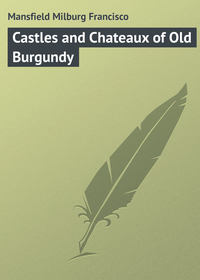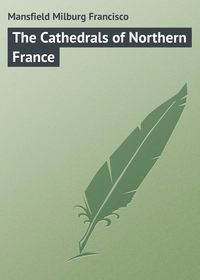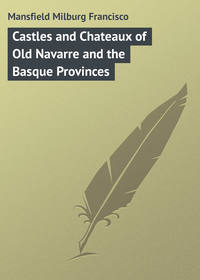 полная версия
полная версияDumas' Paris
The scene was laid in 1784, and runs as follows:
“The marshal turned toward his maître d’hôtel, and said, ‘Sir, I suppose you have prepared me a good dinner?’
“‘Certainly, your Grace.’
“‘You have the list of my guests?’
“‘I remember them perfectly.’
“‘There are two sorts of dinners, sir,’ said the marshal.
“‘True, your Grace, but – ’
“‘In the first place, at what time do we dine?’
“‘Your Grace, the citizens dine at two, the bar at three, the nobility at four – ’
“‘And I, sir?’
“‘Your Grace will dine to-day at five.’
“‘Oh, at five!’
“‘Yes, your Grace, like the king – ’
“‘And why like the king?’
“‘Because, on the list of your guests is the name of a king.’
“‘Not so, sir, you mistake; all my guests to-day are simple noblemen.’
“‘Your Grace is surely jesting; the Count Haga, who is among the guests – ’
“‘Well, sir!’
“‘The Count Haga is a king.’ (The Count Haga was the well-known name of the King of Sweden, assumed by him when travelling in France.)
“‘In any event, your Grace cannot dine before five o’clock.’
“‘In heaven’s name, do not be obstinate, but let us have dinner at four.’
“‘But at four o’clock, your Grace, what I am expecting will not have arrived. Your Grace, I wait for a bottle of wine.’
“‘A bottle of wine! Explain yourself, sir; the thing begins to interest me.’
“‘Listen, then, your Grace; his Majesty, the King of Sweden – I beg pardon, the Count Haga, I should have said – drinks nothing but Tokay.’
“‘Well, am I so poor as to have no Tokay in my cellar? If so, I must dismiss my butler.’
“‘Not so, your Grace; on the contrary, you have about sixty bottles.’
“‘Well, do you think Count Haga will drink sixty bottles with his dinner?’
“‘No, your Grace; but when Count Haga first visited France when he was only prince royal, he dined with the late king, who had received twelve bottles of Tokay from the Emperor of Austria. You are aware that the Tokay of the finest vintages is reserved exclusively for the cellar of the emperor, and that kings themselves can only drink it when he pleases to send it to them.’
“‘I know it.’
“‘Then, your Grace, of these twelve bottles of which the prince royal drank, only two remain. One is in the cellar of his Majesty Louis XVI. – ’
“‘And the other?’
“‘Ah, your Grace!’ said the maître d’hôtel, with a triumphant smile, for he felt that, after the long battle he had been fighting, the moment of victory was at hand, ‘the other one was stolen.’
“‘By whom, then?’
“‘By one of my friends, the late king’s butler, who was under great obligations to me.’
“‘Oh! and so he gave it to you.’
“‘Certainly, your Grace,’ said the maître d’hôtel, with pride.
“‘And what did you do with it?’
“‘I placed it carefully in my master’s cellar.’
“‘Your master? And who was your master at that time?’
“‘His Eminence the Cardinal de Rohan.’
“‘Ah, mon Dieu! at Strasbourg?’
“‘At Saverne.’
“‘And you have sent to seek this bottle for me!’ cried the old marshal.
“‘For you, your Grace,’ replied the maître d’hôtel, in a tone which plainly said, ‘ungrateful as you are.’
“The Duke de Richelieu seized the hand of the old servant, and cried, ‘I beg pardon; you are the king of maîtres d’hôtel.’”
The French noblesse of the eighteenth century may have had retainers of the perspicacity and freedom of manners of this servant of the Maréchal de Richelieu, but it is hard to picture them in real life to-day. At any rate, it bespeaks Dumas’ fondness of good eating and good drinking that he makes so frequent use of references thereto, not only in this novel of a later day, but throughout the mediæval romances as well.
Dumas’ knowledge of gastronomy again finds its vent in “The Count of Monte Cristo,” when the unscrupulous Danglars is held in a dungeon pending his giving up the five millions of francs which he had fraudulently obtained.
It is not a very high-class repast that is discussed, but it shows at least Dumas’ familiarity with the food of man.
“At twelve the guard before Danglars’ cell was replaced by another functionary, and, wishing to catch sight of his new guardian, Danglars approached the door again. He was an athletic, gigantic bandit, with large eyes, thick lips, and a flat nose; his red hair fell in dishevelled masses like snakes around his shoulders. ‘Ah! ah!’ cried Danglars, ‘this fellow is more like an ogre than anything else; however, I am rather too old and tough to be very good eating!’ We see that Danglars was quite collected enough to jest; at the same time, as though to disprove the ogreish propensities, the man took some black bread, cheese, and onions from his wallet, which he began devouring voraciously. ‘May I be hanged,’ said Danglars, glancing at the bandit’s dinner through the crevices of the door, ‘may I be hanged if I can understand how people can eat such filth!’ and he withdrew to seat himself upon his goatskin, which recalled to him the smell of the brandy…
“Four hours passed by, the giant was replaced by another bandit. Danglars, who really began to experience sundry gnawings at the stomach, rose softly, again applied his eye to the crack of the door, and recognized the intelligent countenance of his guide. It was, indeed, Peppino, who was preparing to mount guard as comfortably as possible by seating himself opposite to the door, and placing between his legs an earthen pan, containing chick-pease stewed with bacon. Near the pan he also placed a pretty little basket of grapes and a bottle of Vin d’Orvieto. Peppino was decidedly an epicure. While witnessing these preparations, Danglars’ mouth watered… ‘I can almost imagine,’ said he, ‘that I were at the Café de Paris.’”
Dumas, like every strong personality, had his friends and his enemies. It is doubtful which class was in the ascendency as to numbers. When asked, on one occasion, when he had been dining at the Café de Paris, if he were an archæologist, – he had been admiring a cameo portrait of Julius Cæsar, – he replied, “No, I am absolutely nothing.” His partisans were many, and they were as devoted as his enemies were jealous and uncharitable. Continuing, he said, “I admire this portrait in the capacity of Cæsar’s historian.” “Indeed,” said his interlocutor, “it has never been mentioned in the world of savants.” “Well,” said Dumas, “the world of savants never mentions me.”
This may be conceit or modesty, accordingly as one takes one view or another. Dumas, like most people, was not averse to admiration. Far from it. He thrived exceedingly on it. But he was, as he said, very much alone, and quite felt a nobody at times. Of his gastronomic and epicurean abilities he was vainly proud.
The story is told of the sole possession by Dumas of a certain recipe for stewed carp. Véron, the director of the opera, had instructed his own cook to serve the celebrated dish; she, unable to concoct it satisfactorily, announced her intention of going direct to the novelist to get it from his own lips. Sophie must have been a most ingenious and well-informed person, for she approached Dumas in all hostility and candour. She plunged direct into the subject, presuming that he had acquired the knowledge of this special tidbit from some outside source.
Dumas was evidently greatly flattered, and gave her every possible information, but the experiment was not a success, and the fair cordon-bleu began to throw out the suspicion that Dumas had acquired his culinary accomplishments from some other source than that he had generally admitted. It was at this time that Dumas was at the crux of his affairs with his collaborators.
Accordingly Sophie made her pronouncement that it was with Dumas’ cooking as it was with his romances, and that he was “un grand diable de vaniteux.”
At his home in the Rue Chaussée d’Antin Dumas served many an epicurean feast to his intimates; preparing, it is said, everything with his own hands, even to the stripping of the cabbage-leaves for the soupe aux choux, “sleeves rolled up, and a large apron around his waist.”
A favourite menu was soupe aux choux, the now famous carp, a ragoût de mouton, à l’Hongroise; roti de faisans, and a salade Japonaise– whatever that may have been; the ices and gateaux being sent in from a pâtissier’s.
The customs of the theatre in Paris are, and always have been, peculiar. Dumas himself tells how, upon one occasion, just after he had come permanently to live there, he had placed himself beside an immense queue of people awaiting admission to the Porte St. Martin.
He was not aware of the procedure of lining up before the entrance-doors, and when one well up in the line offered to sell him his place for twenty sous– held since midday – Dumas willingly paid it, and, not knowing that it did not include admission to the performance, was exceedingly distraught when the time came to actually pay for places. This may seem a simple matter in a later day, and to us who have become familiar with similar conditions in Paris and elsewhere; but it serves to show the guilelessness of Dumas, and his little regard for business procedure of any sort.
The incident is continued in his own words, to the effect that he “finally purchased a bit of pasteboard that once had been white, which I presented to the check-taker and received in return another of red… My appearance in the amphitheatre of the house must have been astonishing. I was the very latest Villers-Cotterets fashion, but a revolution had taken place in Paris which had not yet reached my native place. My hair was long, and, being frizzled, it formed a gigantic aureole around my head. I was received with roars of laughter… I dealt the foremost scoffer a vigorous slap in the face, and said, at the same time, ‘My name is Alexandre Dumas. For to-morrow, I am staying at the Hôtel des Vieux-Augustins, and after that at No. 1 Place des Italiens.’”
By some incomprehensible means Dumas was hustled out of the theatre and on to the sidewalk – for disturbing the performance, though the performance had not yet begun. He tried his luck again, however, and this time bought a place at two francs fifty centimes.
Every visitor to Paris has recognized the preëminence of the “Opera” as a social institution. The National Opera, or the Théâtre Impérial de l’Opéra, as it was originally known, in the Rue Lepelletier, just off the Boulevard des Italiens, was the progenitor of the splendid establishment which now terminates the westerly end of the Avenue de l’Opera. The more ancient “Grand Opera” was uncontestably the most splendid, the most pompous, and the most influential of its contemporary institutions throughout Europe.
The origin of the “Grand Opera” was as remote as the times of Anne of Austria, who, it will be recalled, had a most passionate regard for musique and spectacle, and Mazarin caused to be brought from Italy musicians who represented before the queen “musical pieces” which proved highly successful.
Later, in 1672, Louis XIV. accorded the privilege of the Opera to Lulli, a distinguished musician of Florence, and the theatre of the Palais Royal was ceded to the uses of Académie de Musique.
After the fire of 1763, the Opera was transferred to the Tuileries, but removed again, because of another fire, to the Porte St. Martin, where it remained until 1794, when it was transferred to a new house which had been constructed for it in the Rue Richelieu.
Again in 1820 it was removed to a new establishment, which had been erected on the site of the former Hôtel de Choiseul.
This house had accommodations for but two thousand spectators, and, in spite of its sumptuousness and rank, was distinctly inferior in point of size to many opera-houses and theatres elsewhere.
Up to this time the management had been governed after the manner of the old régime, “by three gentlemen of the king’s own establishment, in concurrence with the services of a working director,” and the royal privy purse was virtually responsible for the expenses. Louis-Philippe astutely shifted the responsibility to the public exchequer.
In 1831, Dr. Louis Véron, the founder of the Revue de Paris, – since supplanted by the Revue des Deux Mondes, – became the manager and director. Doctor Véron has been called as much the quintessence of the life of Paris of the first half of the nineteenth century as was Napoleon I. of the history of France.
Albert Vandam, the author of “An Englishman in Paris,” significantly enough links Véron’s name in his recollections with that of Dumas, except that he places Dumas first.
“Robert le Diable” and Taglioni made Véron’s success and his fortune, though he himself was a master of publicity. From 1831 onward, during Véron’s incumbency, the newspapers contained column after column of the “puff personal,” not only with respect to Véron himself, but down through the galaxy of singers and dancers to the veriest stage-carpenter, scenic artist, and call-boy.
The modern managers have advanced somewhat upon these premature efforts; but then the art was in its infancy, and, as Véron himself was a journalist and newspaper proprietor, he probably well understood the gentle art of exchanging favouring puffs of one commodity for those of another.
These were the days of the first successes of Meyerbeer, Halévy, Auber, and Duprez; of Taglioni, who danced herself into a nebula of glory, and later into a shadow which inspired the spiteful critics into condemnation of her waning power.
It has been said that Marie Taglioni was by no means a good-looking woman. Indeed, she must have been decidedly plain. Her manners, too, were apparently not affable, and “her reception of Frenchmen was freezing to a degree – when she thawed it was to Russians, Englishmen, or Viennese.” “One of her shoulders was higher than the other, she limped slightly, and, moreover, waddled like a duck.” Clearly a stage setting was necessary to show off her charms. She was what the French call “une pimbêche.”
The architectural effect produced by the exterior of this forerunner of the present opera was by no means one of monumental splendour. Its architect, Debret, was scathingly criticized for its anomalies. A newspaper anecdote of the time recounts the circumstance of a provincial who, upon asking his way thither, was met with the direction, “That way – the first large gateway on your right.”
Near by was the establishment of the famous Italian restaurateur, Paolo Broggi, the resort of many singers, and the Estaminet du Divan, a sort of humble counterpart of the Café Riche or the Café des Anglais, but which proclaimed a much more literary atmosphere than many of the bigger establishments on the boulevards. Vandam relates of this house of call that “it is a positive fact that the garçon would ask, ‘Does monsieur desire Sue’s or Dumas’ feuilleton with his café?’”
Of the Opera which was burned in 1781, Dumas, in “The Queen’s Necklace,” has a chapter devoted to “Some Words about the Opera.” It is an interesting, albeit a rather superfluous, interpolation in a romance of intrigue and adventure:
“The Opera, that temple of pleasure at Paris, was burned in the month of June, 1781. Twenty persons had perished in the ruins; and, as it was the second time within eighteen years that this had happened, it created a prejudice against the place where it then stood, in the Palais Royal, and the king had ordered its removal to a less central spot. The place chosen was La Porte St. Martin.
“The king, vexed to see Paris deprived for so long of its Opera, became as sorrowful as if the arrivals of grain had ceased, or bread had risen to more than seven sous the quartern loaf. It was melancholy to see the nobility, the army, and the citizens without their after-dinner amusement; and to see the promenades thronged with the unemployed divinities, from the chorus-singers to the prima donnas.
“An architect was then introduced to the king, full of new plans, who promised so perfect a ventilation, that even in case of fire no one could be smothered. He would make eight doors for exit, besides five large windows placed so low that any one could jump out of them. In the place of the beautiful hall of Moreau he was to erect a building with ninety-six feet of frontage toward the boulevard, ornamented with eight caryatides on pillars forming three entrance-doors, a bas-relief above the capitals, and a gallery with three windows. The stage was to be thirty-six feet wide, the theatre seventy-two feet deep and eighty across, from one wall to the other. He asked only seventy-five days and nights before he opened it to the public.
“This appeared to all a mere gasconade, and was much laughed at. The king, however, concluded the agreement with him. Lenoir set to work, and kept his word. But the public feared that a building so quickly erected could not be safe, and when it opened no one would go.
“Even the few courageous ones who did go to the first representation of ‘Adele de Ponthieu’ made their wills first. The architect was in despair. He came to the king to consult him as to what was to be done.
“It was just after the birth of the dauphin; all Paris was full of joy. The king advised him to announce a gratuitous performance in honour of the event, and give a ball after. Doubtless plenty would come, and if the theatre stood, its safety was established.
“‘Thanks, Sire,’ said the architect.
“‘But reflect, first,’ said the king, ‘if there be a crowd, are you sure of your building?’
“‘Sire, I am sure, and shall go there myself.’
“‘I will go to the second representation,’ said the king.
“The architect followed this advice. They played ‘Adele de Ponthieu’ to three thousand spectators, who afterward danced. After this there could be no more fear.”
It was three years after that Madame and the cardinal went to the celebrated ball, the account of which follows in the subsequent chapter of the romance.
Dumas as a dramatist was not so very different from Dumas the novelist. When he first came to Paris the French stage was by no means at a low and stagnant ebb – at least, it was not the thin, watery concoction that many English writers would have us believe; and, furthermore, the world’s great dramatist – Shakespeare – had been and was still influencing and inspiring the French playwright and actor alike.
It was the “Hamlet” of Ducis – a very French Hamlet, but still Hamlet – and the memory of an early interview with Talma that first set fire to the fuel of the stage-fever which afterward produced Dumas the dramatist.
Dumas was not always truthful, or, at least, correct, in his facts, but he did not offend exceedingly, and he was plausible; as much so, at any rate, as Scott, who had erred to the extent of fifteen years in his account of the death of Amy Robsart.
In 1824 was born Alexandre Dumas fils, and at this time the parent was collaborating with Soulié in an attempted, but unfinished, dramatization of Scott’s “Old Mortality.”
By 1830, after he had left official work, Dumas had produced that drama of the Valois, “Henri III.,” at the Théâtre Français, where more than a century before Voltaire had produced his first play, “Œdipe,” and where the “Hernani” of Victor Hugo had just been produced.
It was a splendid and gorgeous event, and the adventures of the Duchesse de Guise, St. Mégrin, Henri III. and his satellites proved to the large and distinguished audience present no inconspicuous element in the success of the future king of romance. It was a veritable triumph, and for the time the author was more talked of and better known than was Hugo, who had already entered the arena, but whose assured fame scarcely dates from before “Hernani,” whose first presentation – though it was afterward performed over three hundred times in the same theatre – was in February of the same year.
Voltaire had been dead scarce a half-century, but already the dust lay thick on his dramatic works, and the world of Paris was looking eagerly forward to the achievements of the new school. One cannot perhaps claim for Dumas that he was in direct lineage of Shakespeare, – as was claimed for Hugo, and with some merit, – but he was undoubtedly one of the first of the race of the popular French playwrights whose fame is perpetuated to-day by Sardou. At any rate, it was a classic struggle which was inaugurated in France – by literature and the drama – in the early half of the nineteenth century, and one which was a frank rebellion against the rigid rules by which their arts had been restrained – especially dramatic art.
From the Dumas Statue by Gustave Doré
With all due credit, then, to Hugo, it was Dumas who led the romanticists through the breach that was slowly opening; though at the same time one may properly enough recall the names of Alfred de Musset, Theophile Gautier, and Gerard de Nerval.
Dumas’ next play was in “classical form” – “Christine.”
Mere chance brought Dumas into an acquaintance with the history of Christine of Sweden, and, though the play was written and accepted before “Henri III. et Sa Cour,” it was not until some time later that it was produced at the Odéon; the recollection of which also brings up the name of Mlle. Mars.
The statue in Paris in the Place Malesherbes, erected to the memory of Dumas, has been highly commended in conception and execution. It was the work of Gustave Doré, and, truth to tell, it has some wonderfully effective sculptures in bronze. A group of three symbolical figures en face, and a lifelike and life-sized representation of the courageous D’Artagnan d’arrière. These details are charming when reproduced on paper by process of photography or the hand of an artist. Indeed, they are of much the same quality when viewed as details, but in the ensemble, combined with a cold, inartistic base or pedestal, which is crowned by a seated effigy of Dumas – also life-size – clad in the unlovely raiment of the latter nineteenth century, there is much to be desired.
Statues, be they bronze or marble, are often artistically successful when their figures are covered with picturesque mediæval garments, but they are invariably a failure, in an artistic sense, when clothed in latter-day garb. Doublet and hose, and sword and cloak lend themselves unmistakably to artistic expression. Trousers and top-hats do not. Just back of the Place Malesherbes is the Avenue de Villiers – a street of fine houses, many of them studio apartments, of Paris’s most famous artists. Here at No. 94 lived Alexandre Dumas during the later years of his life; so it is fitting that his monument should be placed in this vicinity. The house was afterward occupied by Dumas fils, and more lately by his widow, but now it has passed into other hands.
Of interest to Americans is the fact which has been recorded by some one who was au courant with Parisian affairs of the day, “that the United States Minister to France, Mr. John Bigelow, breakfasted with Dumas at St. Gratien, near Paris,” when it came out that he (Dumas) had a notion to go out to America as a war correspondent for the French papers; the Civil War was not then over. Unhappily for all of us, he did not go, and so a truly great book was lost to the world.
In this same connection it has been said that Dumas’ “quadroon autographs” were sold in the United States, to provide additional funds for the widows and orphans of slain abolitionists. As it is apocryphally said that they sold for a matter of a hundred and twenty dollars each, the sum must have reached considerable proportions, if their number was great.
CHAPTER VI.
OLD PARIS
The Paris of Dumas was Méryon’s – though it is well on toward a half-century since either of them saw it. Hence it is no longer theirs; but the master romancer and the master etcher had much in common.
They both drew with a fine, free hand, the one in words that burn themselves in the memory, and the other in lines which, once bitten on the copper plate, are come down to us in indelible fashion. The mention of Méryon and his art is no mere rambling of the pen. Like that of Dumas, his art depicted those bold, broad impressions which rebuilt “old Paris” in a manner which is only comparable to the background which Dumas gave to “Les Trois Mousquetaires.”









